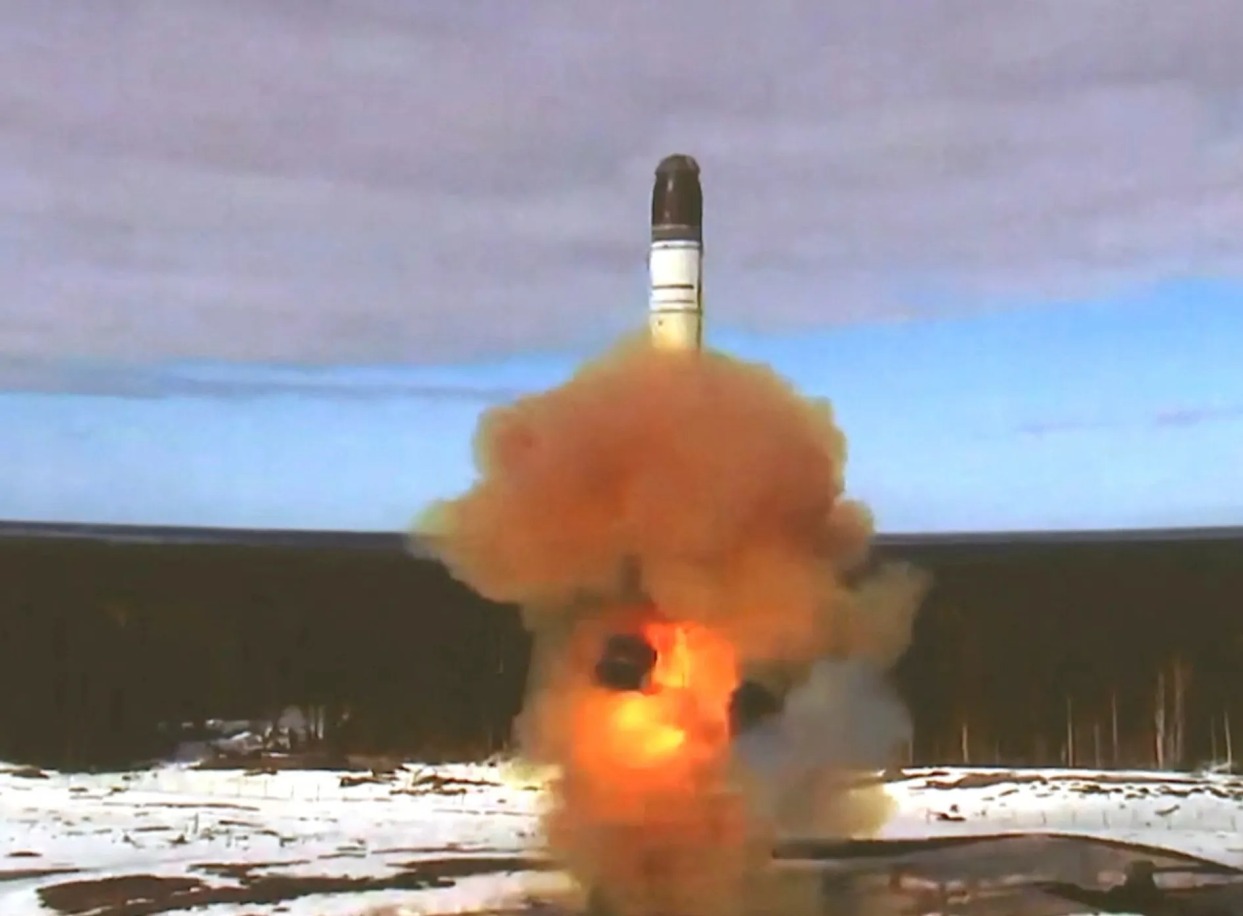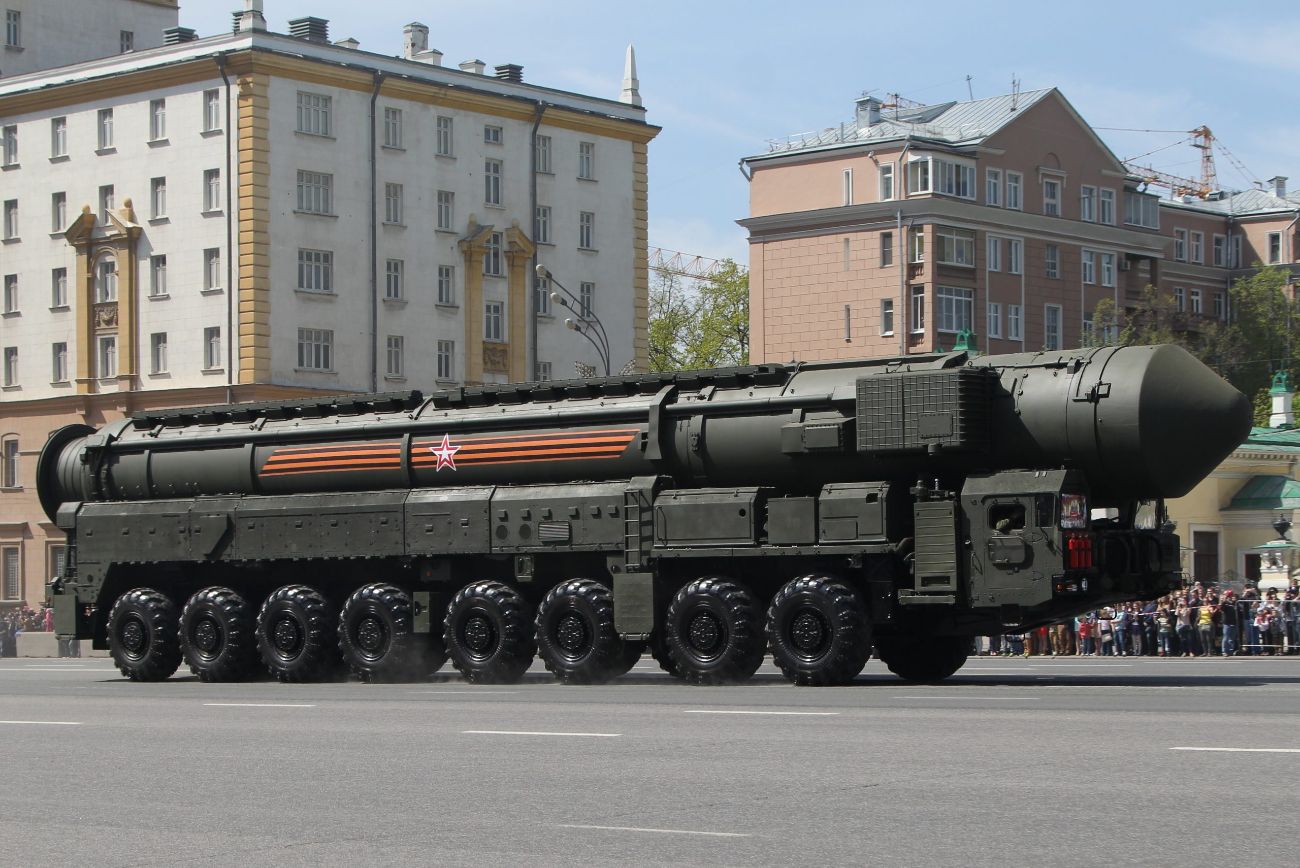In a Telegram post today, former Russian President Dimitri Medvedev, who is known for his rather hawkish views, writes:
“What arrogant Anglo-Saxon dimwits fail to admit, though, is that you can only test someone’s patience for so long. It will turn out in the end that certain moderate Western analysts were right when they warned: ‘True, the Russians are not likely to use this response, although… it’s still a possibility. Besides, they may use new delivery vehicles with conventional payloads.’
And then – it’s over. A giant blot of molten-grey mass in the place where ‘the mother of Russian cities’ once stood. Holy shit, it’s impossible, but it happened…”
What Exactly Did Medvedev Threaten
It’s possible that Medvedev is alluding to the possible use by Russia of its FOAB (Father Of All Bombs), the heaviest conventional bomb made by Russia.
The FOAB’s official name is ATBIP (Aviation Thermobaric Bomb of Increased Power). The bomb weighs around 7,100 kg and reportedly has an explosive yield equivalent to 44 tons of TNT.
The FOAB uses a thermobaric explosive, which is particularly devastating due to its ability to detonate in the air, creating a high-pressure blast wave and a prolonged combustion effect. This makes it extremely effective against soft and hard targets alike, including structures, fortifications, and personnel.
The FOAB was first revealed to the public in 2007, showcasing Russia’s advancements in conventional weaponry. Russia developed the bomb in response to the American Massive Ordnance Air Blast (MOAB), often referred to as the “Mother of All Bombs.”
FOAB Delivery Challenges
All Russian bomber fleet aircraft – Tu-22M3 Backfire, Tu-95MS Bear-H, and Tu-160 Blackjack—are equipped to deliver the FOAB. However, Medvedev’s reference to the “use of new delivery vehicles” suggests that a better delivery option than the bombers, which would likely suffer high attrition rates during their bombing runs due to US Patriot missile systems deployed around Kiev, is contemplated.
Medvedev could be referring to the use of a missile such as the RS-28 Sarmat, also known as Satan II, which can carry a 10-ton payload to intercontinental range.
The Sarmat was designed to replace the Soviet-era SS-18 Satan ICBMs and represents one of the most powerful intercontinental ballistic missiles in terms of payload capacity. Importantly, the missile is designed to carry conventional or nuclear warheads.

The 7-ton FOAB would be easy for the Sarmat to carry. However, since Sarmat is designed to carry multiple warheads, it’s possible that it could carry more than one independently targeted FOABs
The Sarmat is a liquid-fueled missile with a launch weight of 208.1 metric tons, most of it fuel. By reducing the fuel load of the behemoth, it’s theoretically possible to dramatically increase the missile’s payload.
However, trading range for greater warhead load isn’t as simple as it may appear.
A relatively simple option would be to drop a stage of the three-stage missile. However, dropping a stage would change the missile’s aerodynamic form, necessitating changes in flight control algorithms, which would then have to be validated through flight tests.
A seemingly more robust and simpler option would be to reduce the fuel loading in some or all stages to accommodate the larger warhead.
However, increasing the payload beyond design specifications could affect the missile’s stability, trajectory, and accuracy, which are critical.
An important point to note is that the Sarmat is a post-Soviet development by Russia that builds on Soviet-era technology. The missile was officially inducted into Russia’s strategic forces as late as September 2023.
Understanding Russia’s Threat Perception
Russia started perceiving NATO’s inexorable expansion eastwards towards Russia’s border as an existential threat since early this century. It has been developing various response options to deter such expansion.
In 2018, President Putin announced several new weapon systems that Russia had developed in response to the perceived threat. Notably, these included the Sarmat missiles. Other weapon systems developed include the Avangard hypersonic glide vehicle, Kinzhal (Kh-47M2) air-launched ballistic missile, Burevestnik (Skyfall or SSC-X-9) nuclear-powered cruise missile, Poseidon (Status-6 or Kanyon) autonomous, nuclear-powered, and nuclear-armed torpedo or drone submarine, and Peresvet space warfare laser weapon system.

It’s feasible, perhaps likely, that the Sarmat was developed from the start with the capability to deliver larger warheads when striking targets at shorter ranges. Indeed, it’s conceivable that the Sarmat has been tested with varying payloads.
In the past, Russian officials other than Medvedev have alluded to using a new weapon in the case of Ukrainian escalation.
Conclusion
If, indeed, Medvedev is alluding to the possible use of a massive conventional warhead delivered using a missile, the world could well breathe a sigh of relief – We are not as close to nuclear armageddon as many analysts have warned.
A conventional Russian response to a Ukrainian escalation – such as deep strikes into Russian territory with Western weapons and guidance – however severe, is not anywhere as escalatory as the use of even a small nuclear weapon such as an artillery shell!
However, the use of the Sarmat missile with a 7-ton FOAB warhead could bring Ukraine to its knees fairly quickly. Of course, the collateral damage from the 7-ton warhead would be heavy, but not as heavy as the collateral damage resulting from inaccurate Ukrainian drones dropping 7 tons of TNT on Russian cities.
Clearly, the Russian response is proportionate, besides being conventional.
It has been admitted by the US Secretary of Defence that deep strikes using US weapons by Ukrainian forces would have little impact on Russia’s warfighting capabilities, as Russia has already moved 90% of its strike power outside the range of US weapons.
Under the circumstances, it makes little sense for Ukraine to continue pressing the West for clearing deep strikes.
- Vijainder K Thakur is a retired IAF Jaguar pilot, author, software architect, entrepreneur, and military analyst.
- VIEWS PERSONAL OF THE AUTHOR
- Follow the author @vkthakur




